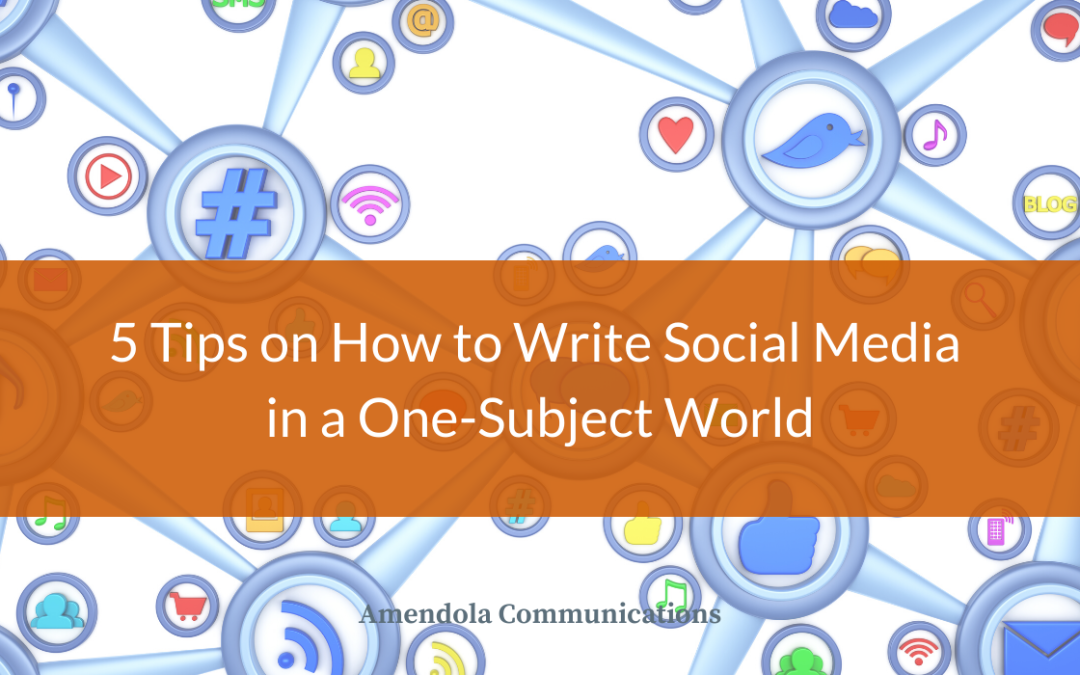
by Brandon Glenn | Aug 7, 2024 | Blog
We all understand that the role of a corporate marketing department, among other things, is to promote its company, educate potential customers, and strengthen the company’s brand image – with the ultimate goal of driving higher sales.
Most marketers know how to articulate the benefits and value proposition of their company’s products, and, generally, they do a solid job of it.
What fewer marketers understand is when NOT to talk about their companies – particularly on social media. (For the purposes of this article, we’ll focus on LinkedIn because it’s the most valuable social site for business users.)
It’s important for marketers to remember that social media platforms are intended to encourage two-way communication, as opposed to functioning like a megaphone used to blast messages.
Accordingly, corporate social media must focus on providing value to followers. Indeed, corporate social media success requires putting followers’ wants and needs above the company’s own objectives.
The 80/20 rule for social media success
The 80/20 rule is the answer for keeping marketers focused on delivering value to their audiences. This cardinal rule for social media simply holds that 80% of the content posted to a social account should deliver value to the audience (think general industry news, opinions, and observations) while it’s ok for the other 20% to be blatantly promotional.
In my experience, most corporate marketing departments have mastered the 20% aspect of the rule but tend to struggle with the 80% part. Admittedly, it can be a little daunting in the beginning to understand and figure out how to fulfill this goal.
First, start with a list of keywords that pertain to your company’s niche in the industry. For example, if the company works in the virtual care space, create news alerts and perform searches for keywords like “telehealth,” “virtual care,” “virtual nursing,” “value-based care,” “healthcare staffing shortages,” and “healthcare burnout,” for example. Relevant hash tags can also help to surface third-party articles that discuss industry trends.
These articles make up the 80% of non-promotional content, while the other 20% can consist of product and technology-related information specific to the company.
Professionals go to LinkedIn when they need information, making it a great place to demonstrate thought leadership by sharing insights, stats, and case studies. These users want to discuss topics in their industry, cultivate professional connections, and better themselves as professionals along their career trajectory.
By adhering to the 80/20 rule, brands can help LinkedIn users accomplish these objectives. Just keep in mind the cardinal rule of social media: It’s not all about you.

by Margaret Kelly | May 20, 2020 | Blog
AKA #WantToUseNewHashtags!
As any public relations professional will tell you, making your story stand out from the rest of the noise is what we’re paid the big bucks to do. Press releases, bylines, blogs and case studies are the stuff of dreams.
Internally, this is how it’s done: your Amendola team is comprised of an account executive, strategist, writer, media relations specialist and, if we handle it for you, a social media manager. Everyone on your team is deeply knowledgeable about your company’s offerings.
The strategist and account executive put your company’s expert message in front of our writer who produces a piece of content. The media relations specialist pickups up the ball and gets the press release or byline in front of the right set of editors and journalists who are looking for exactly the contact you have. Once it’s published, the social media manager links the article to your various social media platforms.
Client-generated content is nuggets of gold for the social media team; however, we follow a pretty strict practice of the 80/20 rule. That means all your company’s
LinkedIn, Facebook and Twitter posts should be a mix of 20% company news and 80% third-party content to keep you focused as a thought leader on the topics
in which you excel. You want your followers to be interested in your feeds because you generate news of interest, not just commercials.
Finding that all-important third-party content for your social media posts is where the social media team earns its KUDOs.
But how do we do that when the whole world is talking about one subject?
Don’t get us wrong especially when all our clients are in the healthcare field – we have the utmost compassion for everyone suffering and working courageously during the COVID-19 pandemic. It’s impacting everyone their jobs, health, lives, and everyday routines. This is by far, the single largest collective story we’ll see in our lifetime. But my colleagues and I are struggling to keep it fresh in a one-hashtag world.
So once again, how do we find articles that help propel you as a thought leader when all media seems tuned to one channel? How do we help you stand out above the din?
Here are 5 tips to help you find ways to enhance your message.
- Research. Our team finds RSS feeds (such as Feedly) a good resource for tracking keywords created in a Google search, or to subscribe to specific outlets, which is perfect for locating articles that come at least close to your company’s subject. Additionally, we use keyword searches within Twitter to actively find articles, people with whom to engage, and conversations around hashtags normally discussed in a non-pandemic world.
- Pivot. Turn your company’s news into the world’s news. Do you have a solution that helps patients monitor their meds and stay compliant? I could find you 10 articles any other day. But now, I have an article that mentions how COVID-19 patients are getting free insulin, which keeps them compliant. Do you work with EHRs? Let’s talk about how EHRs are helping or hurting during COVID-19. Give your opinion. Ask for others to tweet or comment theirs. The idea is to keep in your lane but stay relevant.
- Sidestep. OK, so perhaps you can only make 20% of your posts about you. But you can include news about your clients or business partners. Find articles about them and thank them for doing a great job. Thank others for helping your clients. If you’re not already (and you should be!) follow your clients’ Twitter feeds. When they post something positive about a local restaurant feeding them, or a video of their clinicians dancing to relieve the stress, share it! Re-tweet with a comment like, “Thanks, @Joe, for helping our friends @Client! #FrontLineHeros.” It’s technically not your news, but it’s a way to engage with your clients, and most of all, it feels good.
- Join in. If you can’t beat em, join em. You’re not going to get out of posting COVID-19 news; why fight it? However, everyone is in the same boat as you tired of reading all the grim statistics. So, let’s give them something to smile about!
- Let us help. In these difficult times, you’ve got enough on your plate. You’re trying to run a business, keep employees on staff, and find solutions to beat this nasty thing. Why don’t you let the Social Media Team at Amendola help you lighten the load?
Remember social media is just one part of your overall messaging. When used in conjunction with the rest of your public relations offerings, it’s like adding frosting to the cake. Although, I am a little impartial. Stay safe!


